Air-conduction and bone-conduction are familiar terms; now enter ‘cartilage conduction’. This new term offers a novel approach sound transmission. Hiroshi Hosoi explains the concept and proposes some future applications.
The new sound pathway ‘cartilage conduction’ can provide various types of new sound products to the world. The first product using this pathway is a hearing aid which can help patients who cannot use regular hearing aids.
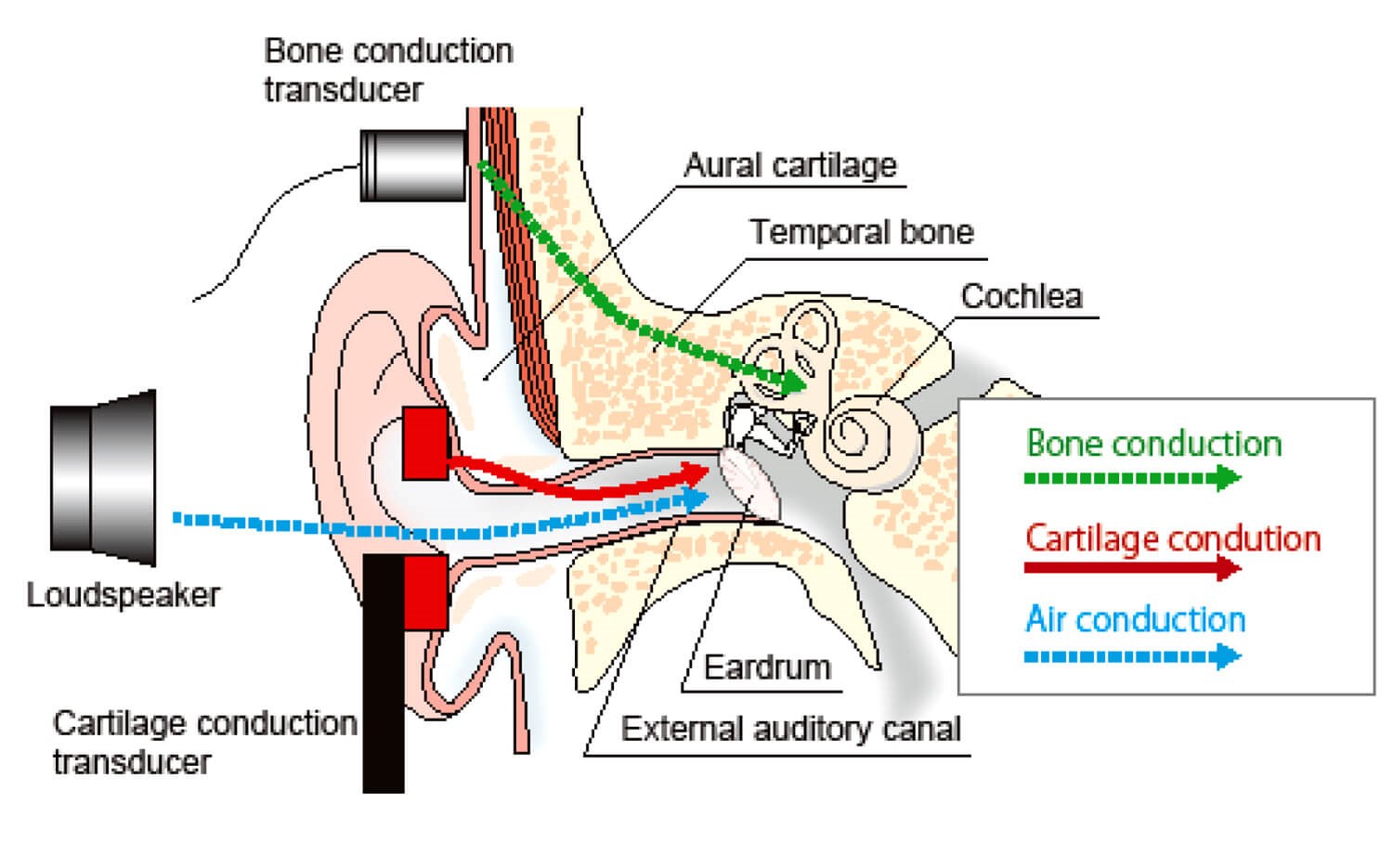
Figure 1: Three sound conduction pathways [1].
What is cartilage conduction?
It has been long considered that air conduction (AC) and bone conduction (BC) are the two major mediators that conduct sounds to the inner ear. In 2004, Hosoi found that vibration of aural cartilage, generated by gently placing a transducer on it, could create audible sound with the same level of clarity as AC and BC sound. He thus proposed the term ‘cartilage conduction (CC)’ for this concept (see Figure 1). The most significant difference between BC and CC in normal external auditory canals is essential or unnecessary in vibration of cranial bone. Hosoi also proposed the development of novel communication devices, such as hearing aids, telephones, etc. using his findings [1].
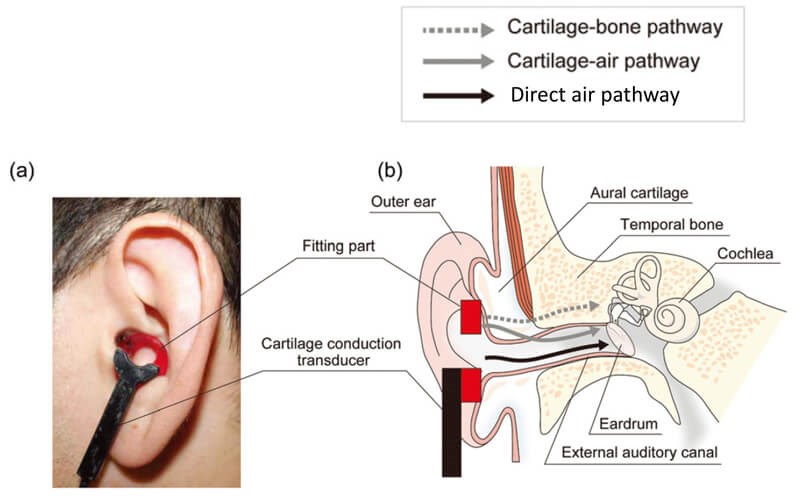
Figure 2: (a) Wearing the transducer on the entrance of the ear canal. (b) Three possible pathways in CC: cartilage-bone pathway (vibration of cartilage conducts to the skull bone), cartilage-air pathway (vibration of the cartilage produces sound in the ear canal) and direct air pathway (vibration of the transducer makes the sound) [1].
Three plus one pathways can be assumed in CC
The transducer vibration may cause airborne sound which passes into the external auditory canal through the canal entrance (direct air pathway). Alternatively, the vibration at the cartilage may generate audible sound in the external auditory canal (cartilage-air pathway),or propagate directly to the inner ear through the skull bone (cartilage-bone pathway) (see Figure 2). A series of studies has illustrated that the cartilage-air pathway is dominant for hearing sensations in listeners with normal external auditory canals. The cartilage-bone pathway works for patients with bony aural atresia. A fourth pathway, i.e. plus one pathway, the fibrotic-tissue pathway, is considered to act in the case of fibrotic aural atresia.
CC hearing aids for the patients with atresia of the external auditory canal
Nara Medical University and Rion Co., Ltd have developed a CC hearing aid for patients who cannot use conventional AC hearing aids (due, for example, to atresia of the external auditory canal or severe otorrhea). Although such patients are usually encouraged to use a BC hearing aid, BC hearing aids require strong pressure against the cranial bone, hence many patients suffer from pain and annoyance. In addition, the sustained pressure on the skull causes several disorders at the contact point on the skin, including a cave-in and erosion. Furthermore, the transmission efficacy of acoustic information is low, therefore considerably large energy is needed to transmit vibrations to the heavy skull bone. In contrast, CC does not require strong and sustained pressure on the user’s tissues, because cartilage is much lighter than skull bone so less vibrational power is needed, and also CC hearing aids can give a stereo-sound by binaural hearing aid fitting. Thus, CC hearing aids would provide great benefit to patients with outer ear disorders.
“CC does not require strong and sustained pressure on the user’s tissues, because cartilage is much lighter than skull bone so less vibrational power is needed”
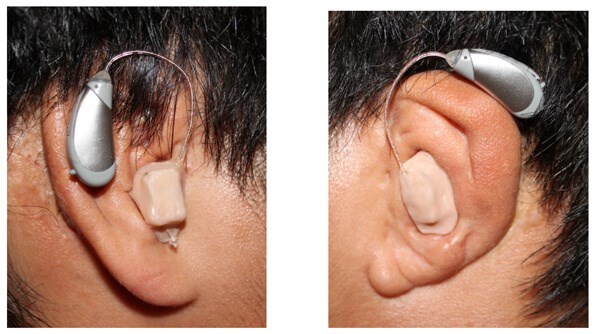
Figure 3 (a). Case 1: 19 years old, male (bilateral bony aural atresia, BAHA user). The view of his ears with CC hearing aids made by RION. CC hearing aids were easily fixed without any equipment.
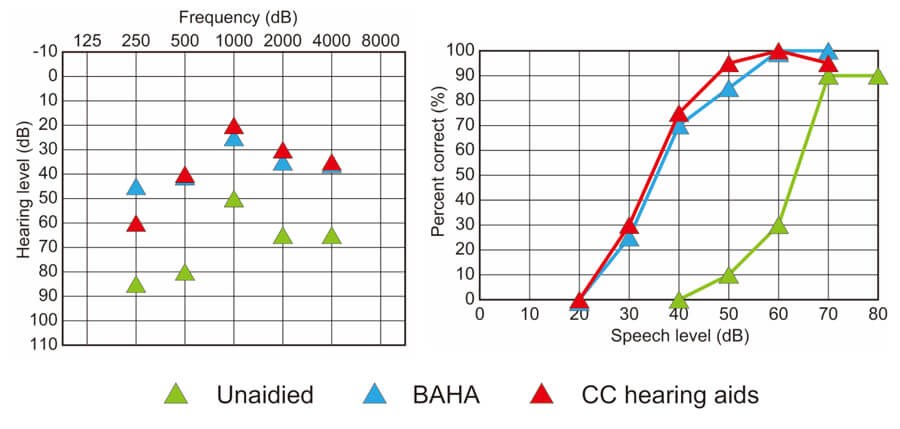
Figure 3 (b). Audiometric test results. They reveal no clear difference between BAHA and CC hearing aids.
Case report
Case 1: 19 years old, male (bilateral bony aural atresia, BAHA user) Patient underwent an operation for BAHA at the age of 17 years old. When spoken from the unaided side, he often feels the difficulty in hearing. Figure 3 shows the view of his ears with CC hearing aids and audiometric test results which reveal no clear difference between BAHA and CC hearing aids. CC hearing aid is more advantageous than BAHA in this case, because an operation is unnecessary and sound is provided in stereo.
Results from the 41 subjects (21 with bilateral aural atresia; 15 with unilateral aural atresia; and five others)
Before the trial, BC hearing aids had been used most frequently by bilateral aural atresia subjects. However, after the trial, most subjects continued to use CC hearing aids instead of reverting back to their original device. Overall, 39 out of 41 subjects continued use of the CC hearing aids [2].
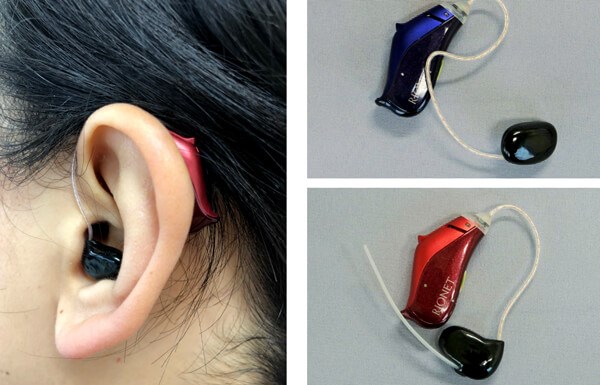
Figure 4: The prototype of CC hearing aids for the patients with sensorineural hearing impairment made by RION.
CC hearing aids for the patients with sensorineural hearing impairment
For the patients with mild to moderate hearing loss, open ear hearing aids are recommended. Though some open ear AC hearing aids are on the market, we propose the CC hearing aids for such patients as another option (see Figure 4). We have not had enough data which prove the supremacy of CC hearing aids over conventional AC hearing aids so far, however we think that there is a possibility of supremacy in the point of preference of the sound quality because our preliminary test results revealed that there were some people who prefer CC to AC hearing aids.
“Overall, 39 out of 41 subjects continued use of the CC hearing aids”
Other audio and communication equipment – application of CC
Various types of new audio equipment can be realised using CC. These are mainly for people with normal hearing; however these are also helpful for the hearing-impaired.
CC smartphone
There are 12 advantages of CC for mobile phones: (1) Easy volume control, without button operation; (2) Insulation from outside noise and obtaining the best signal-to-noise ratio (S/N) (this is advantageous in noisy circumstances); (3) No sound leakage (this is advantageous in quiet circumstances); (4) Easy position adjustment between telephone receiver (vibrator) and ear; (5) Clean liquid crystal display without adhesion of makeup cosmetics (for females in particular); (6) Microminiaturisation; (7) Thin body; (8) Arrangement of receiver (vibrator); (9) No pressure on the auricle; (10) Battery friendly; (11) Small vibrator; (12) Clear speech sound even with a hearing aid.
Considering that good speech perception is fundamental for communication tools, CC smartphones are more useful than regular AC smart phones.
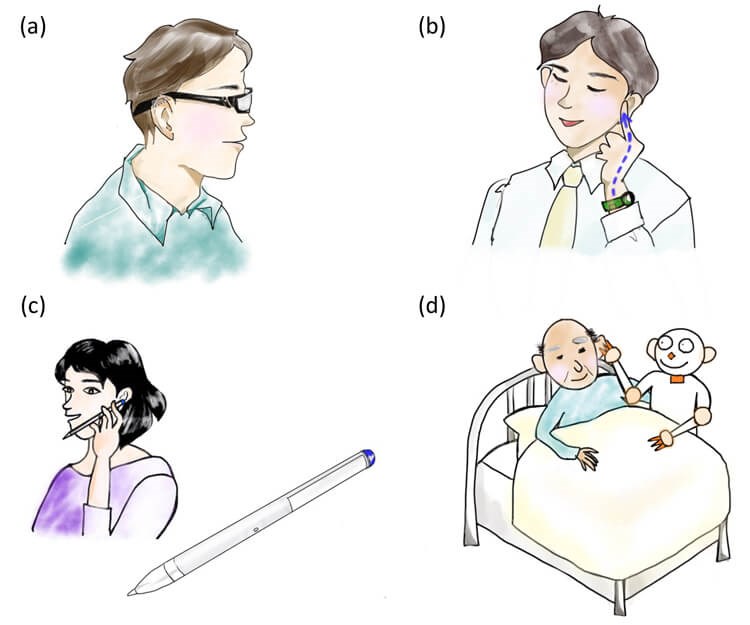
Figure 5: Various kinds of cartilage conduction (CC) applications in the future [1]. (a) Eyeglass-type communication device (mobile phones, computer terminals, hearing aids, etc.) The vibrator is attached to the ear canal at behind the auricle. (b) Wristwatch-type communication device (mobile phones, computer terminals, etc.) (c) Pen-type communication device (mobile phones, computer terminals, etc.) Best to use with a tablet. (d) Robot (nursing-care robot, information-distribution robot, etc.) Cartilage conduction vibrator is embedded in the finger of the robot.
Eyeglass-type communication device (mobile phones, computer terminals, hearing aids, etc.)
Vibration from a vibrator on the temples in a pair of glasses could be transmitted from behind the auricle to the cartilage of the ear canal to produce sound in the canal. Users of this device could hear sound without putting earphones in their ears, as shown in Figure 5(a).
Wristwatch-type communication device (mobile phones, computer terminals, etc.)
A vibrator in a wristwatch or wristband would cause vibrations at the fingertip. The vibrations would then be transmitted from the finger to the ear canal cartilage, where the vibration would produce sound in the canal, as shown in Figure 5(b).
Pen-type communication device (mobile phones, computer terminals, etc.)
CC could bring very slim mobile phones into reality as shown in Figure 5(c). This type would be very convenient when used with a tablet PC.
Robot (nursing-care robot, information-distribution robot, etc.)
CC would be most suitable for robot-to-human (1-to-1) communication. When a loudspeaker is used for communication between a robot and a human, the sound from the loudspeaker becomes a nuisance to those around the person. With CC, a person could get clear sound from the robot without any nuisance to their neighbours, as shown in Figure 5(d).
References
1. Hosoi H, Nishimura T, Shimokura R, et al. Cartilage conduction as the third pathway for sound transmission. Auris Nasus Larynx 2019;46:151-9.
2. Nishimura T, Hosoi H, Saito O, et al. Cartilage conduction hearing aids for severe conduction hearing loss. Otology & Neurotology 2018;39:65-72.
Declaration of Competing Interests: None declared.





